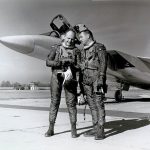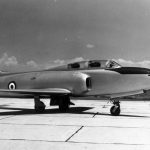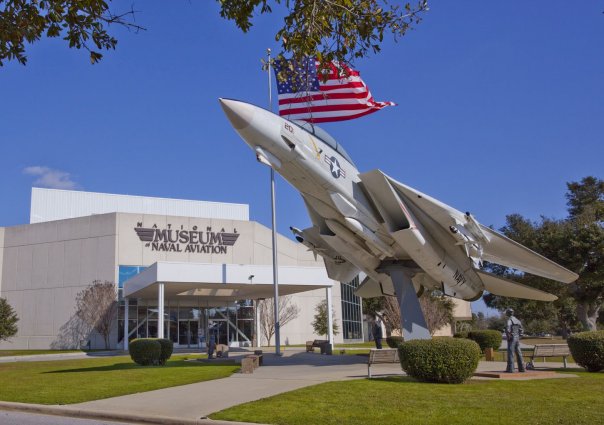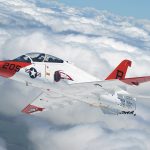
The X-29 was envisioned as a joint venture between the United States Air Force, the National Aeronautics and Space Administration (NASA), and the Defense Advanced Research Projects Agency (DARPA) to explore concepts in forward-swept wings and carbon-fiber composites, with a capacity to obtain and maintain supersonic speeds and to be exceptionally maneuverable. In 1981, the Grumman Corporation was awarded a contract to develop two new aircraft for these tests, selecting the forward fuselages of two Northrop F-5 Freedom Fighters (USAF serials 63-8372 and 65-10573) as a basis for what the company designated as the Grumman G-712, along with the landing gear of an F-16 Fighting Falcon. 63-8372 would be issued the new USAF serial number 82-0003 and 65-10573 the number 82-0049 and were constructed at Grumman’s Plant 5 in Bethpage, New York.

While forward-swept wings are certainly unusual in the field of aeronautics, the X-29 was by no means the first aircraft to fly with this wing configuration. During the 1930s, Soviet designer Viktor Belyayev built a series of forward-swept wing gliders such as the BP-2 and BP-3 in preparation for his design for a forward-swept wing, twin boom bomber, the DB-LK, of which only one prototype was built and flown. During WWII, the German manufacturer Junkers built a forward-swept wing jet bomber called the Ju 287, which was captured by the Red Army and served as the basis for the Soviet’s OKB-1 EF-131 and 140 prototype bombers, and in the 1960s, West German manufacturer Hamburger Flugzeugbau built the HFB 320 Hansa Jet. However, conventional alloys used in aircraft construction often needed greater structural integrity in a forward-swept design due to the pull of aerodynamic forces on the leading edges of a forward-swept wing. With the advent of carbon-fiber composites, the structure of forward-swept wings could be made of lighter materials while integrating the strength to withstand the forces that not only pull and twist at the wings.
The X-29 is described as a three-surface aircraft, using canards, forward-swept wings, and aft strake control surfaces to maintain three-surface longitudinal control. One of the biggest challenges for the X-29 was the unusual center of gravity, which was affected by the rear-mounting of the forward-swept wings and made the X-29 inherently unstable. This was why the strakes were added to the X-29’s tail, in order to reduce drag from using the trim on the canard in the nose. Additionally, the X-29 was fitted with three of the latest computerized flight control systems of the era, making 40 inflight corrections per second and adding redundancy to the system.

It was determined that upon completion of the X-29s, they were to be transported across the country to NASA’s Dryden Flight Research Center (now Armstrong Flight Research Center) at Edwards Air Force Base in the high deserts of California, which was used to test prototype aircraft of the US government since WWII. The first X-29 prototype, 82-0003 (NASA 003), took off on its maiden flight from Edwards on December 14, 1984, piloted by Grumman’s Chief Test Pilot Chuck Sewell. A year later, on December 13, 1985, the aircraft became the first forward-swept wing aircraft to exceed the speed of sound. Thee second aircraft, 82-0049 (NASA 049), was not flown until May 23, 1989, and was tested alongside its sister ship out of Dryden, flying high above Rogers Dry Lake.
One attribute that was unique to the second prototype was that unlike the first one (NASA 003), 82-0049/NASA 049 was fitted with a tail-mounted parachute to recover the aircraft in the event of a spin, given the type’s instability, though the flight parameters set for evaluation flights sought to avoid just such a departure from controlled flight. 82-0049/NASA 049 was maneuverable up to an angle of attack of about 25 degrees with a maximum angle of 67° reached in a momentary pitch-up maneuver.
In all, the two X-29s flew a total of 242 times from 1984 to 1991. It was reported that the X-29 successfully demonstrated new applications for new technological innovations and existing components used in high performance aircraft, from aeroelastic tailoring to control structural divergence, three-surface longitudinal control, vortex control, trailing-edge mounted double-hinged flaperons at supersonic speeds, and aircraft handling during periods of extreme instability.
Today, both Grumman X-29s remain in existence today. 82-0003/NASA 003 was sent to the National Museum of the United States Air Force at Wright-Patterson Air Force Base, Dayton, Ohio as part of the Research and Development Gallery, while 82-0049/NASA 049 is displayed outdoors alongside other research aircraft at NASA Armstrong Flight Research Center, Edwards AFB, California. Additionally, a full-scale mockup was displayed at the National Air and Space Museum in Washington, D.C. before being transferred to the Cradle of Aviation Museum in Garden City, New York. Even today, 40 years after the Grumman X-29 remains a visually striking design, and its contributions to aerospace engineering are still being applied to modern high-performance aircraft of today, even if such aircraft do not share the X-29’s forward-swept wings.
Today in Aviation History is a series highlighting the achievements, innovations, and milestones that have shaped the skies. All the previous anniversaries are available HERE





































